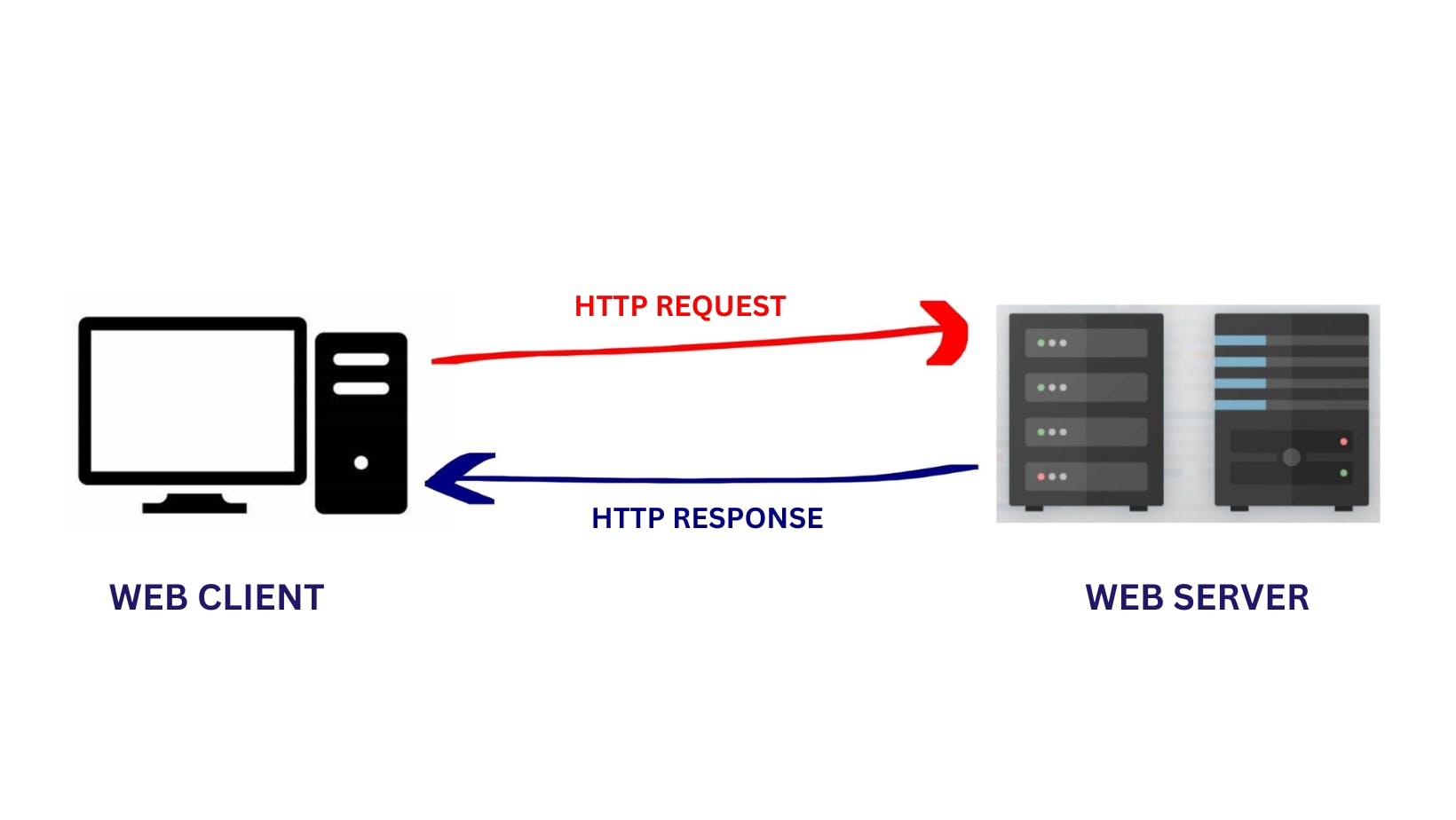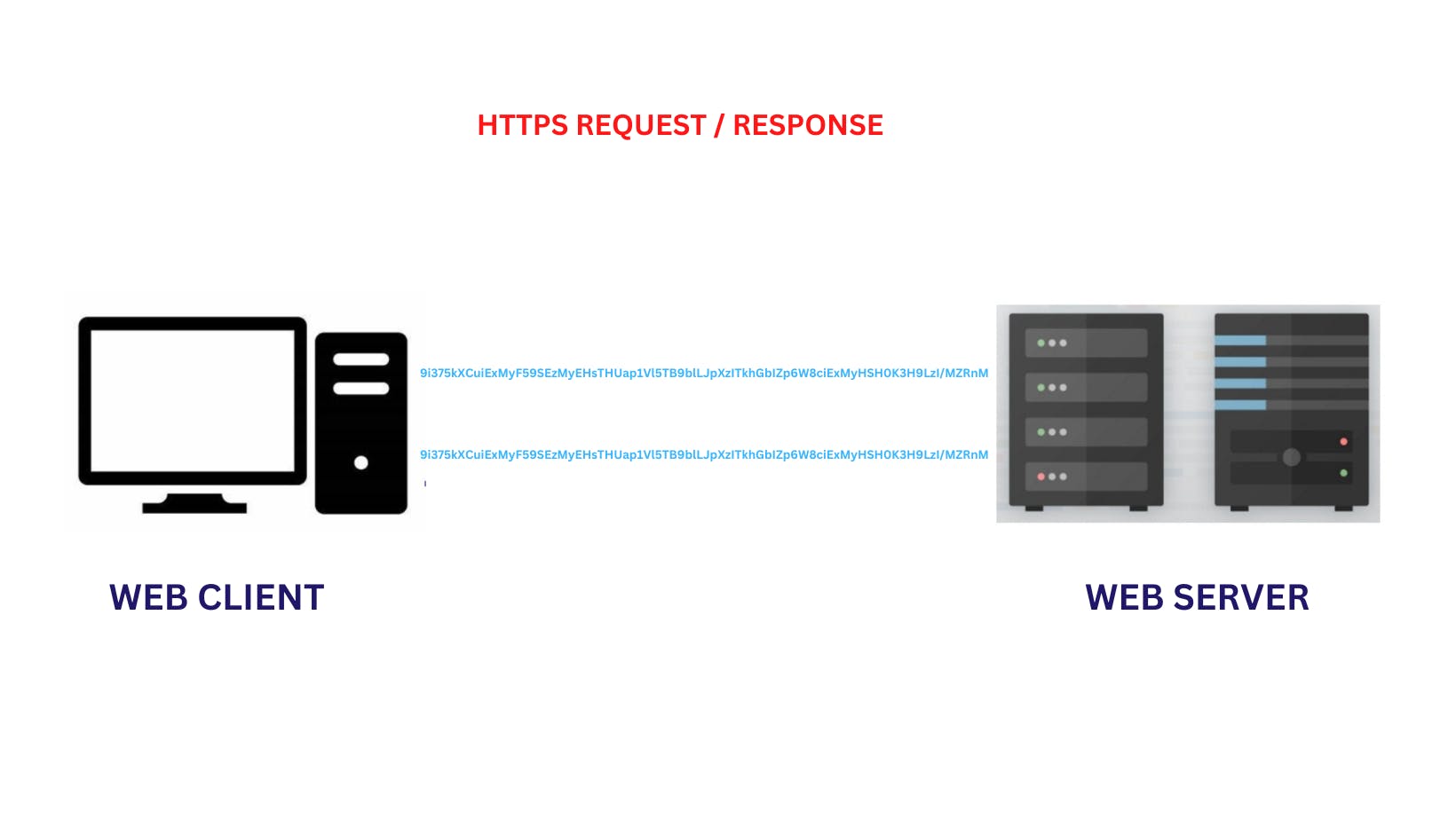HTTP
HTTP (Hypertext Transfer Protocol) is a protocol used for transferring data over the internet, specifically for the World Wide Web. It is a stateless protocol, meaning that it does not retain any information about previous interactions, and it defines a set of rules and guidelines for how data should be formatted and transmitted between a client (e.g. a web browser) and a server (e.g. a website). It is a request-response protocol, where the client sends a request to the server and the server sends a response back. Data is transferred in plaintext, making it easy to be intercepted by third parties.
HTTP uses two main types of methods: GET and POST :
GET method is used to request data from a server. When a user clicks on a link or types a URL into the address bar of a web browser, it sends a GET request to the server. This request asks the server to retrieve a specific resource, such as a web page, and send it back to the client. The GET method is typically used to retrieve information and is considered a safe method, as it does not change the state of the server.
POST method is used to submit data to a server. When a user fills out a form on a website and clicks the submit button, the browser sends a POST request to the server. This request includes the data entered into the form, which is then processed by the server. The POST method is typically used to create or update resources on the server and is considered an unsafe method as it may change the state of the server.
In summary, HTTP is a protocol used for transferring data over the internet, it's simple but less secure. It uses two main types of methods, GET and POST, where GET is used to request data from a server and POST is used to submit data to a server.

HTTPS
HTTPS (HTTP Secure) is a protocol used for secure communication between a web server and a web browser. It is an extension of the HTTP (Hypertext Transfer Protocol) and uses the same methods (GET and POST) for data transfer. However, it adds an extra layer of security to the data transmission by using SSL/TLS encryption and server authentication. This ensures that the data being transmitted cannot be intercepted by third parties and that the user is connecting to the correct website, preventing phishing attempts.
Encryption is the process of converting plaintext into ciphertext, which is unreadable to anyone without the key to decrypt it. In this case, the SSL/TLS certificate provides the encryption key. This encryption helps to protect sensitive information and online transactions, such as online banking and e-commerce.
HTTP and HTTPS also have another important feature which is Status Codes. Status codes are the numbers that web servers return to the browser to indicate the status of the requested resource. For example, a 200 OK code means that the request was successful, while a 404 Not Found code means that the requested resource could not be found. These codes help the browser understand the outcome of the request and to act accordingly, and also can help developers to debug issues.
In summary, HTTPS is a more secure version of HTTP which uses SSL/TLS encryption and server authentication for secure data transmission and also it has status codes for better communication between browser and server. SSL (Secure Sockets Layer) and its successor, TLS (Transport Layer Security) are cryptographic protocols that provide the encryption and the authentication that makes HTTPS secure.

OSI MODEL
The OSI model is a framework that helps to understand how different protocols and technologies work together to enable communication over a network.
The OSI model is divided into seven layers, with each layer responsible for a specific aspect of network communication. The application layer is the topmost layer of the OSI model, and it is responsible for providing the interface between the application and the network. This is where protocols such as HTTP and HTTPS operate.
Here's the summary of OSI model Layers :
The Application layer is responsible for providing the interface between the application and the network. This is where protocols such as HTTP and HTTPS operate.
The Presentation layer is responsible for formatting, compressing and encrypting data before it is sent over the network.
The Session layer is responsible for establishing, maintaining and terminating sessions between applications.
The Transport layer is responsible for providing reliable end-to-end communication between devices.
The Network layer is responsible for routing and forwarding data between networks.
The Data Link layer is responsible for providing a reliable link between devices on a network.
The Physical layer is responsible for transmitting raw data over the network.

pov:- You searched Rickroll on Google
Source:-
